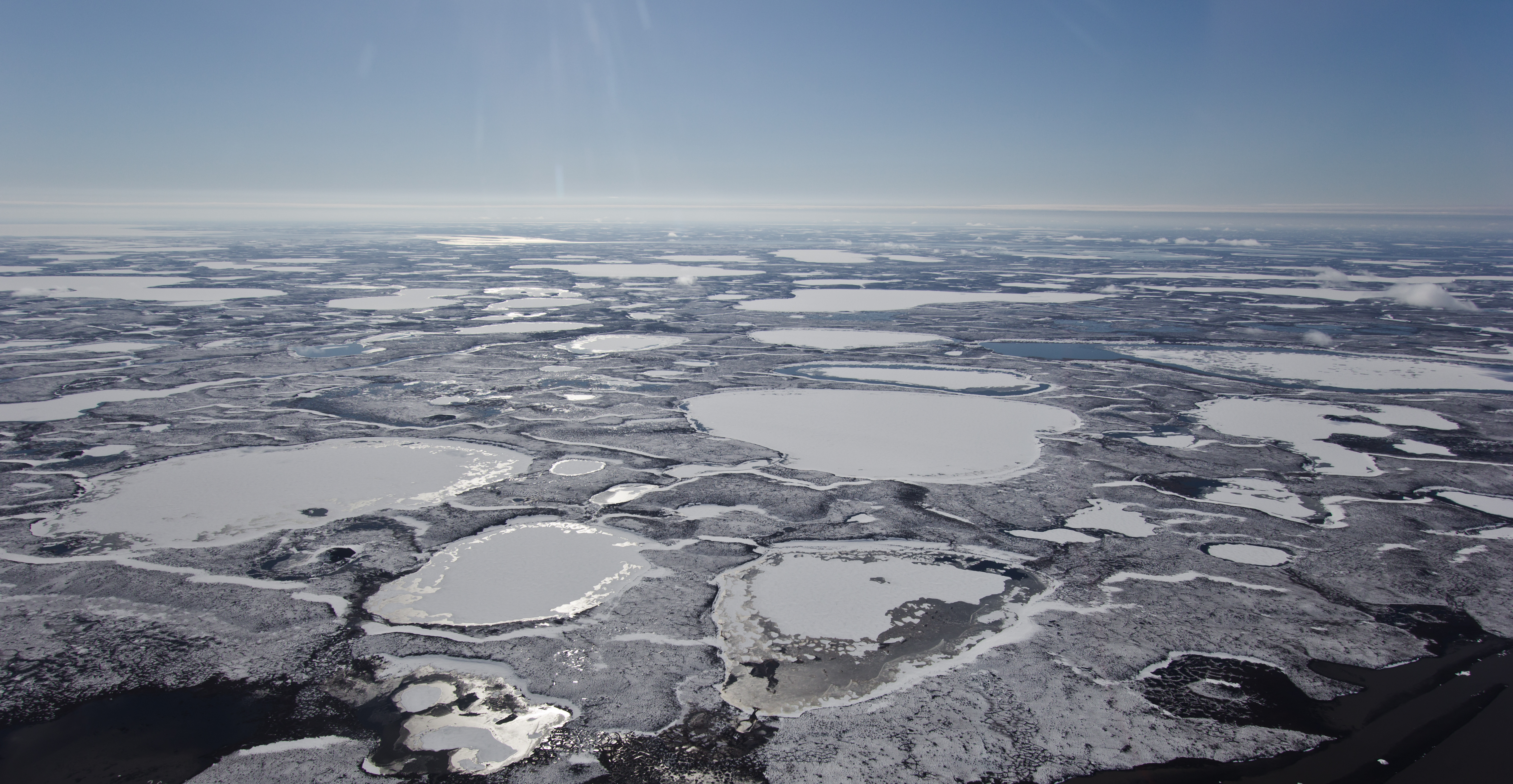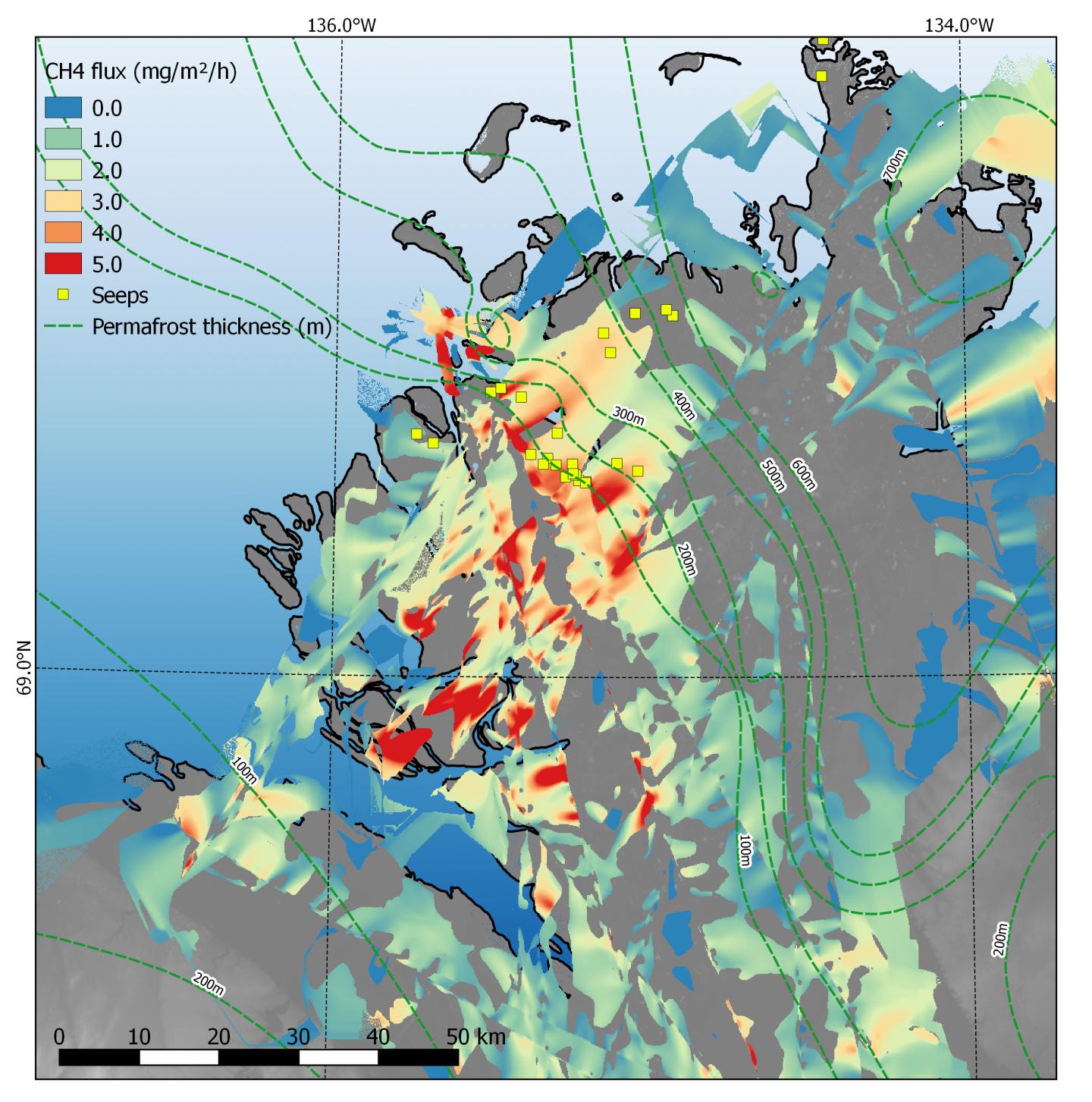Strong methane emissions in Canada’s Arctic linked to sub-permafrost methane banks

As the Arctic faces the loss of vast areas of permafrost due to higher temperatures, a key question facing scientists is how much methane — a highly potent greenhouse gas — the thawing permafrost might release.
A new study published Wednesday in the journal Scientific Reports hints at how ancient methane sources trapped under Arctic permafrost might figure into overall methane emissions as the area warms.
Working in an area of thin and discontinuous permafrost in Canada’s Mackenzie River delta, researchers observed methane emissions 13 times greater than those typically produced by microbes digesting newly thawed organic matter.
This suggests, the researchers concluded, that the emissions were a result of old methane being freed from its permafrost tomb, rather than new methane created by biological activity triggered by warmer temperatures.
While multiple studies examine those new or biological sources of methane, the authors note that the contribution of older, deep hydrocarbon reservoirs to overall methane emissions has been far less certain.
During the 2012 and 2013 summers, the scientists measured the amount of methane fluxes in the region, comparing blocks of thin permafrost (up to 100 meters) near areas of much thicker permafrost (300 or more meters).

The study found high emissions coming from the thin, discontinuous permafrost in the delta. Because the emissions were so high, the researchers estimated that the large amount of methane was geologic — old gas previously trapped under permafrost.
“It was very obvious,” said Torsten Sachs, a co-author of the paper and assistant professor at Atmospheric Physics Technische Universitat Braunschweig in Germany. “We saw that the thaw was in the same place as massive emissions.”
Alexander Kholodov, a research associate at the University of Alaska’s Permafrost Laboratory who was not part of the study, said the methane emissions could also be caused by the decomposition of gas hydrate due to warming to the area. A review of scientific literature by the U.S. Geological Survey in February, though, said that it would be “unlikely” that this interaction would lead a massive methane release.
The Mackenzie Delta was an ideal location for this research, according to Sachs, thanks to the region’s sharp boundary between thick, continuous permafrost and thin permafrost with gaps in it. This allowed the team to crisscross the areas of thick permafrost and thin permafrost, essentially comparing them side to side.
The release of methane due to permafrost thawing in the Arctic is of concern to scientists, as it could contribute to even more warming, which in turn could prompt even further permafrost loss — known as a climate feedback loop. A study released in April estimated that with every degree Celsius, or 1.8 degrees Fahrenheit, of warming, the Arctic could lose 1.5 million square miles of permafrost.
In 2015, the U.S. Geological Survey projected that near-surface permafrost in Alaska will be reduced by 16 to 24 percent by 2100. Last year, scientists in Alaska’s North Slope found that some permafrost in the beds of several lakes had already passed its thaw threshold, about 70 years ahead of its predicted pace.
Sachs said that the North Slope is an area of interest for him; he has already collected extensive measurements from the region and is analyzing them. But while there was a very sharp difference between emissions in different areas of the Mackenzie Delta, he says he isn’t seeing the same dramatic results in the North Slope.
This might be because the permafrost is more substantial in the area, Sachs said, at least for now.
“The lid is thicker,” Sachs said.